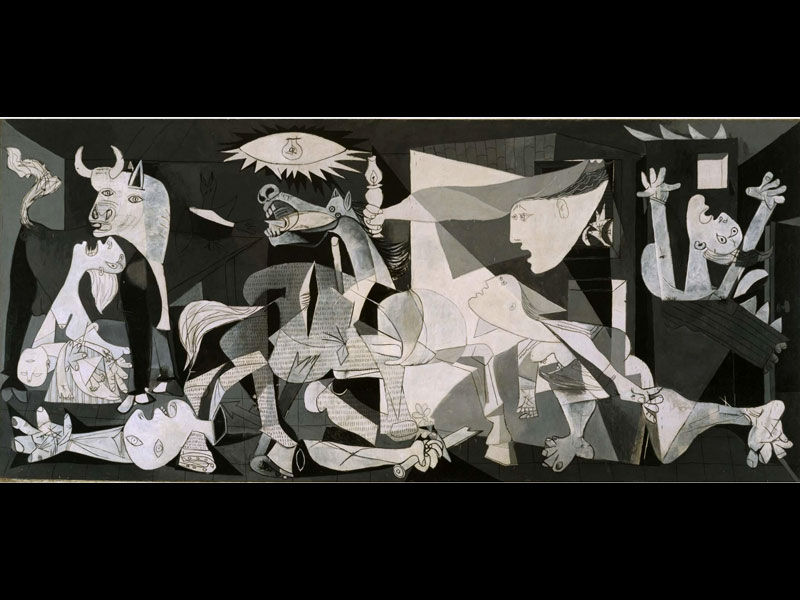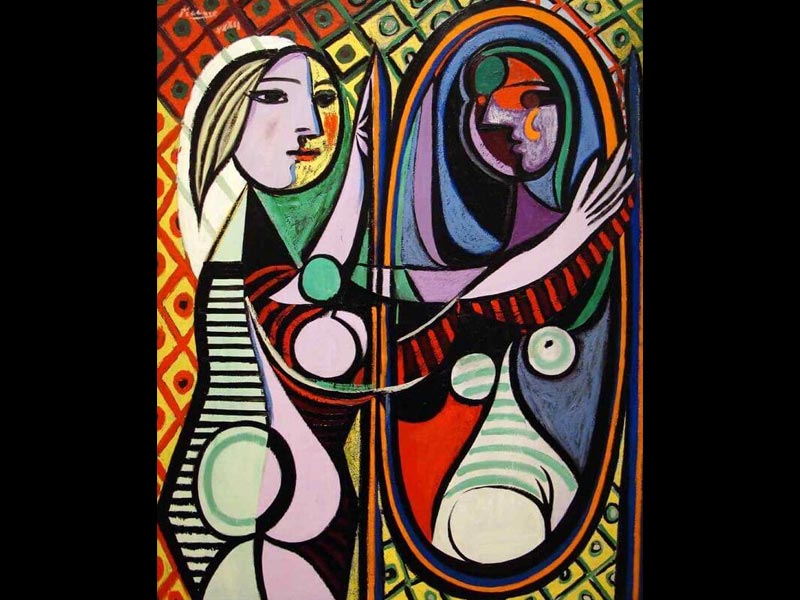Pablo Picasso’s name is always connected with contemporary art. Regardless of how you look at his career, there is no doubting that Pablo Picasso’s innovative ideas changed the path of art history. The great Spanish artist altered many mediums and created so many works that it’s difficult to comprehend his accomplishments. Picasso painted nonstop from 1900 until 1973, when he died, and many of the twentieth-century art styles would not have occurred without the impact of his paintings.
Picasso’s Art Styles
Picasso’s art styles went through at least six transformations. They were largely impacted by what was going on in his surrounding environment and how he felt about it. The Blue era, The Pink era, The African era, Cubism & Collage, Neo-classicism, and Surrealism are the names of the stages of his artwork.
The Blue Era (1901–1904) is named because of the blue tones found in many of Picasso’s works from that period. Picasso ascribed his decision to paint only in blues to his sadness following the suicide of his friend Carlos Casagemas in a Paris café.
He ceased painting in blue colors and moved to colors of pink during the Pink Era (1904– 1906), which witnessed a move from sadness to love. And moved away from detailed human form portrayals and toward more impressionistic human portraits.
Picasso was influenced by the works of African folk artists, particularly their masks, during the African Era (1907–1909), and therefore freed himself from the obligation to depict human faces customarily. Simultaneously, he was influenced by the dryness of Paul Cézanne’s last works. Picasso considerably decreased the visual language of his paintings during this period of fast experimentation, leaning more toward abstraction.
Cubism & College was popular from 1908 through 1912. Cubism was one of the most prominent trends in abstract art history. Picasso is credited with inventing the style, which blended two-dimensionality with various viewpoints and reduced geometric patterns. Picasso and his contemporary Georges Braques began experimenting with debris such as shredded paper, twine, and cloth in their works when they invented Cubism.
He moved away from Cubism and toward a more classical painting style during the Neo-Classicism era (1918 – 1928). Throughout the rest of his career, he reverted to Cubist trends.
The era of Surrealism (1928 – 1948). The field of Surrealism began to grow across all of the arts in the early 1920s. Picasso, like many other painters of the time, was fascinated by Surrealist notions. Picasso’s “Bone Period,” in which he depicted human forms as grotesque assemblages of bone fragments, is portrayed in several of his early Surrealist works. He attempted to connect humanity’s fantasy life with reality.
Without further ado, here are the Top 8 Picasso Paintings!
1)The Weeping Woman

Pablo Picasso depicts a crying lady clutching her dead kid in his masterpiece Guernica. He subsequently painted a series of portraits based on this person, culminating in the series’ last and most ornate picture. Dora Maar, a French photographer and painter who was his mistress from 1936 until 1944, is the model in the artwork. During their relationship, Maar was one of Picasso’s most influential characters and his major model. Picasso skillfully depicts the sorrow and anguish felt by the subject in the painting by using distorted pictures, carefully placed tears, blue chattering teeth, and piercing black eyes.
2)Les Demoiselles d’Avignon

This revolutionary work, originally named Le Bordel d’Avignon (The Brothel of Avignon), is regarded as one of the most significant paintings of the twentieth century since it influenced Cubism and Modern art. Picasso depicted each person in various styles, with the head of the woman tugging the curtain in the top right being the most rigorously Cubist feature.
The artwork was divisive not just because of its avant-garde style but also because of its theme. It was initially shown to the public in 1916. The title was altered to soften the impact of its scandalous nature as the work’s title refers to a district in Barcelona known for its brothels. Five naked female prostitutes are depicted in an unsettling aggressive style in the artwork. They are shown with jagged and disconnected body forms, with African mask-like characteristics on the two characters on the right.
3)Guernica

Guernica, a 1937 composition believed to be one of the most renowned Picasso paintings ever, is probably the clearest illustration of how art can make strong political criticism. The film’s theme is the horrible bombing tactics used by Nazi forces during the conquest of Guernica, a Basque town, during the Spanish Civil War. Pablo illustrated the tragedy of war and the suffering of innocent civilians with these ideals in mind. Guernica’s style is a one-of-a-kind blend of pastoral and grandiose. This masterwork, standing 11feet tall and 25 feet wide, is a loud and strong denunciation of war.
Also Read, The world’s top 10 paintings
4)La Vie

Surprisingly, this picture, Picasso’s first masterpiece, was completed while the artist was just 20 years old. The painting is also the most famous of Picasso’s Blue Period works, characterized by a restricted palette of blues and greys and depicted melancholy topics. The shape of La Vie is that of an allegory, but of what, exactly, art historians have remained baffled. It’s thought to have been in response to the suicide of Carles Casagemas, a compatriot and comrade-in-arms who committed suicide over his unrequited love for an artist model, Germaine Gargallo, who subsequently became Picasso’s mistress.
5)Girl before a Mirror

Girl Before a Mirror, painted in March 1932, features another portrait of Picasso’s French mistress, Marie-Thérèse Walter. The entire artwork functions as a clear instruction manual for Cubism: an artist takes an item, disassembles it into smaller pieces, and then recreates those components on a canvas using geometric forms. Girl Before A Mirror is a reflection of feminine vanity and the fear of growing old. The vibrant imagery is rapidly overshadowed by a disturbing representation of a lady peering into her future self’s dark and twisted abyss, fearful of impending doom.
6)The Old Guitarist

The Old Guitarist is an oil painting by Pablo Picasso that was painted between 1903 and 1904. A frail old guy stooped over his guitar and playing his instrument in the streets of Barcelona is shown in this somber Picasso artwork. Picasso is claimed to have created this picture after his close friend Casagemas committed himself. This was also the moment when he lent a sympathetic ear to the poor and disadvantaged. The Old Guitarist, along with La vie en rose, is sometimes cited as the crown of Picasso’s Blue phase, with graphics akin to El Greco’s harsh work.
7)Boy with a Pipe

Picasso was 24 years old when he painted Boy with a Pipe in 1905. It was painted during his famous Rose Period, shortly after moving to Paris’ fabled Montmartre neighborhood. A Parisian youngster holds a pipe in his left hand and wears a flower garland or wreath on his head in this oil painting.
Picasso is claimed to have spent a long time preparing the Boy with a Pipe, posing the young guy in several attitudes that included standing, sitting, and resting against the wall. Pablo Picasso finally chose to go with the youngster sitting down after extensive repositioning of the model. Boy with a Pipe is a pivotal painting in Picasso’s career, paving the way for a slew of subsequent works.
8)La Reve

Le Rêve is a 1932 oil painting by Pablo Picasso, who was 50 years old. Marie-Thérèse Walter, the artist’s 22-year-old mistress, was shown in it. It is claimed to have been painted in one afternoon. However, there is no way of knowing for sure. It is the pinnacle of Picasso’s distorted portrayals phase, with simple forms and high contrast colors reminiscent of early Fauvism.
Le Reve, which translates to “The Dream” in French, is widely regarded as one of Picasso’s most sensual works; it is even said that the painter portrayed his manhood in Marie-Thérèse Walter’s upturned face. Unlike his later mistress Dora Maar, who Picasso frequently depicted as tormented or menacing, Marie-Thérèse appears in Picasso’s works as blonde, cheerful, and radiant. Le Rêve was sold for $155 million in a private sale in March 2013, making it the sixth most expensive painting ever sold at the time.
“Every child is an artist. The problem is how to remain an artist once we grow up.”
-Pablo Picasso





























